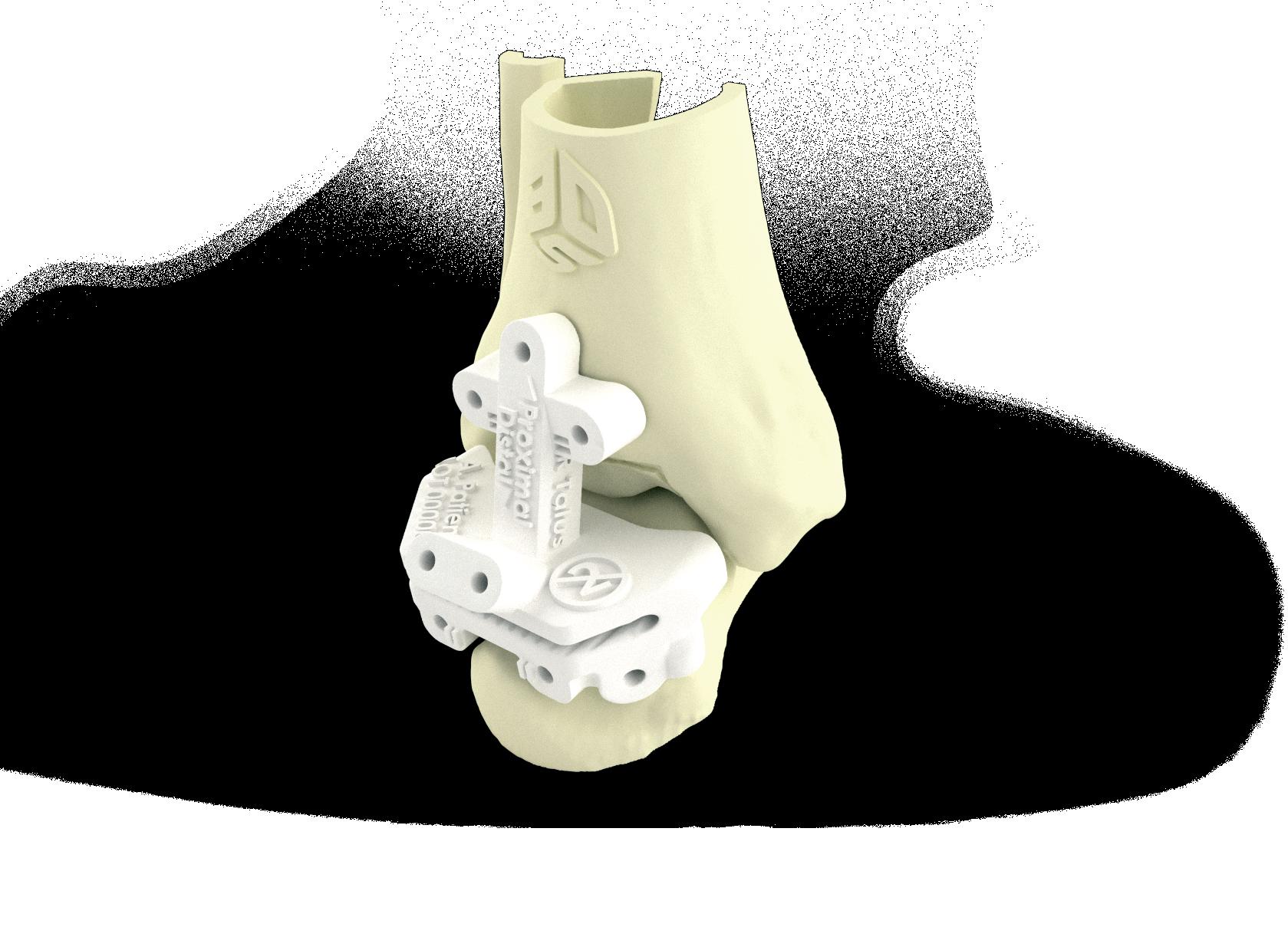Expert Column
MITIGATING SUPPLY CHAIN RISK T
WORDS: Oliver Smith, Rethink Additive
oday, every transaction and operation, product and service, customer and supplier is global. The COVID-19 pandemic has brought the many existing vulnerabilities of global supply chains to the forefront and many of these are known to business leaders; stock-outs, suppliers going under, huge commodity price fluctuations. So, if businesses are aware of these risks and have a suite of supply management tools and techniques to mitigate them, why did so many struggle or collapse through the pandemic?
components, tools and even production equipment spares to keep critical processes moving and get critical products out the door.
The pandemic demonstrated that organizations are ill-equipped to manage macro-level events, or “Black Swan” events, that impact entire supply chains. As Donald Rumsfeld stated, there are unknown unknowns, events that we can neither predict what they will be or when they will occur. McKinsey’s Global Institute has indeed attempted to predict these unknowns, with their research estimating catastrophic supply chain shocks occurring once every 3.7 years and set to increase in occurrence.
The first step is for businesses not to replace their production processes with 3D printing but use it as a means of supporting existing shop floor operations and increasing efficiency of existing capital equipment.
Throughout the pandemic, 3D printing emerged as a solution for pro-active businesses to secure their operations in the face of these unknown shocks. Amid the chaos, manufacturers, suppliers and OEMS looked to 3D printing as an ad-hoc, rapidresponse solution to provide on-site and immediate
As we move into a world where business leaders are now painfully aware of the weak links in their supply chain, organizations need to proactively develop supply chain strategies that take advantage of 3D printing to reduce future risk from geographic disruption, demand fluctuations and improve their speed of response.
For the most part, high volume parts have comparatively lower per-part value, making 3D printing an uneconomical solution in most instances. However, 3D printing is adept at supporting traditional medium-to-high volume production methods by printing tooling that is simultaneously more functional, lower cost and more accessible. Many manufacturers use 3D printing for jigs and fixtures, but applications can go beyond that: specialized tooling, job aids, molds for direct production, and machine service parts. The advantage of switching to a digital, print-on-demand inventory of shopfloor parts has multiple benefits. The first being a low-risk, lowinvestment strategy for businesses looking to investigate and adopt 3D printing; many sub-10K USD Vat Polymer and Material Extrusion printers are more than capable of producing functional jigs, fixtures and tooling with impressive mechanical properties, most notably high HDT and ESD qualities. Primarily, it decouples you from tooling suppliers, allowing you to maintain shop floor
044 / www.tctmagazine.com / VOL 8 ISSUE 2
operations independently of the health of your suppliers. An alternative strategy is “dual manufacturing”, where a part is designed and qualified for multiple manufacturing processes, one efficient at high volumes such as casting or molding, and another efficient at lower volumes such as 3D printing or machining. This duality in design enables far more agility and efficiency in the deployment of production capacity and allows manufacturers to respond both rapidly and economically to fluctuations in demand where 3D printing can augment traditional production capacity and produce overflow of parts until demand is sufficient to justify investment in further conventional capital equipment such as injection molding. The ultimate insurance against supply chain disruption is to decouple a business from fixed capacity and established manufacturing centers entirely. 3D printing as a tool-less, digitally driven, on-demand production process eliminates this final constraint and allows for hyper-agile and responsive production of parts via a distributed production network, either owned and operated by the business or via 3rd party capacity, or a mix of both. This strategy is the most significant in terms of investment and organizational management, however as 3D printing service bureaus and contract manufacturers become increasingly networked, the ability for manufacturers large and small to begin migrating specific high-value, slow-moving inventory, as well as critical part inventories, over to a cloud-based, distributed network of 3D printing bureaus will become progressively more accessible. Moving away from traditional modes of production and supply chain configuration towards a more lean and agile mode employing modern manufacturing technologies such as 3D printing is a significant undertaking for any business, and demands buy-in, support and resourcing from every facet of the organization, from the C-suite to the shop floor operators. But as the previous three years have shown us, whilst the prospect of integrating new technologies to ward off supply chain disruption may be daunting, the risk of not doing so can well be catastrophic.









